The best yoga mats should keep keen yogis journeying to yoga nirvana for years to come, but finding your perfect match isn’t always an easy task.
We put some of the best yoga (opens in new tab) mat brands to the test; our mission was to find yoga mats to suit all budgets, lifestyles, and yoga styles, working out what does and doesn’t work for different variations of practice and exercise.
Whether you’re an advanced practitioner or just discovering your downward dog for the first time, a mat isn’t just a mat. Qualities like thickness, material, size, and grip all spell the difference between being truly present during class or simply slip-sliding and wobbling your way to warrior one.
There are many benefits of yoga (opens in new tab), and hot yoga benefits (opens in new tab) are also up for grabs if you prefer to turn up the heat during class. A review published in the International Journal of Yoga (opens in new tab) found yoga has been shown to improve physical, mental, and spiritual health, including managing symptoms of stress, anxiety, and mood-related disorders. In turn, these improvements can lower stress on your immune system.
And according to Harvard Health (opens in new tab), yoga improves your cardiovascular health and fitness, also helping to lower blood pressure and even improve issues with self-esteem and body image.
If you’re still figuring out what you want from a mat, we recommend holding back on spending hundreds of dollars and experimenting with different types first. Our expert guide includes leading brands from across the market and we’ve also summarized what each mat is best at.
We also cover the best eco-conscious buys, travel-friendly finds, and super sticky, grippy reversible mats that are sure to have you in a headstand for longer.
From the affordable to the luxury, it’s all here. Get gut-happy with yoga for digestion (opens in new tab) or read on for our best yoga mats guide.
Best yoga mats
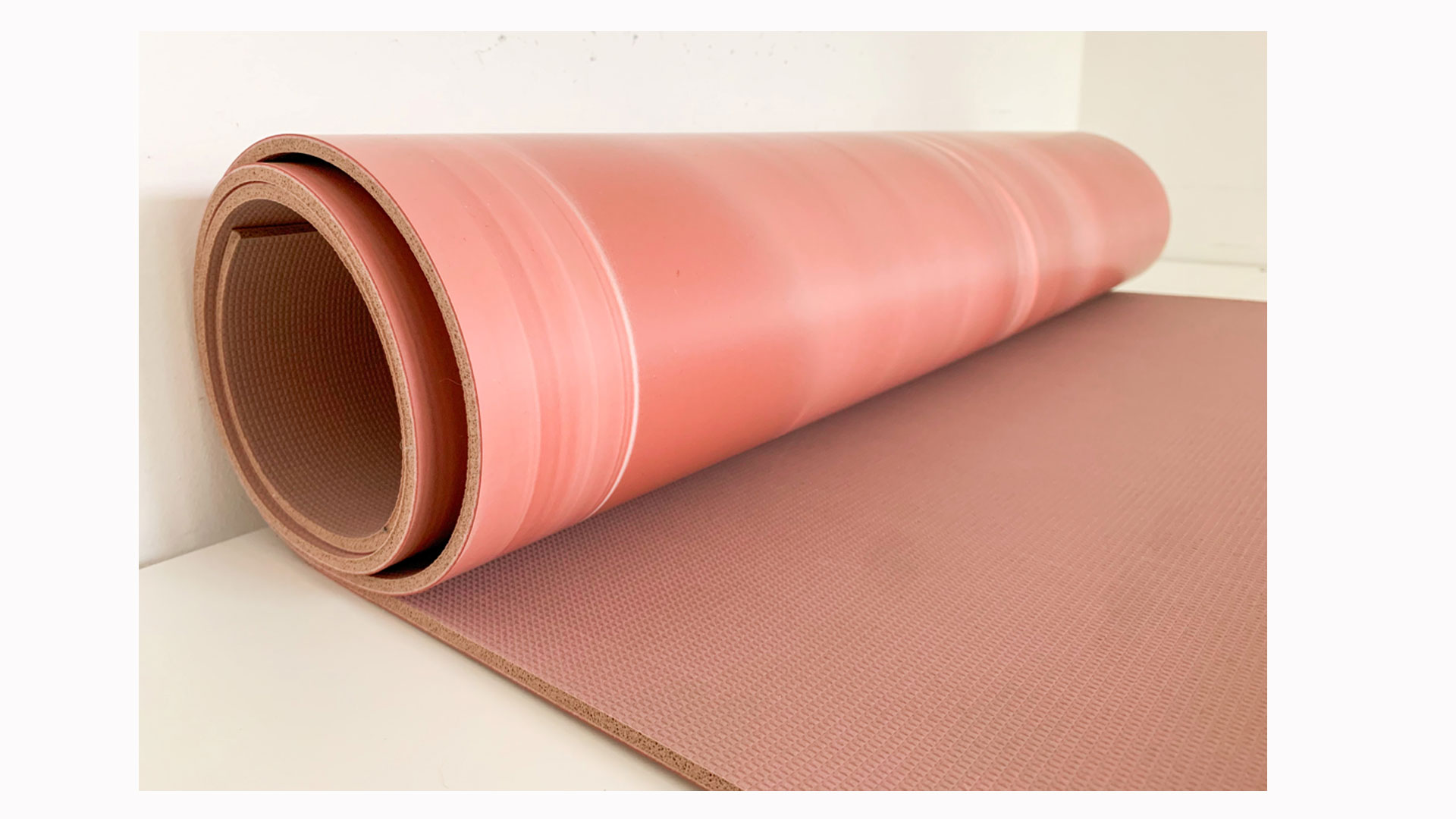
For once you can believe the hype: the Lululemon Reversible 5mm Yoga Mat is worth every cent.
Well made, durable and with excellent traction in both wet and dry conditions, it’s the yoga mat that keeps on giving.
It’s springy enough to move around on with great cushioning to support bones and joints. Its thin polyurethane layer and ‘sweat-wicking’ natural rubber base, does a good job at absorbing moisture and the antimicrobial additive in the mat prevents bacteria from building up.
It’s a bit smelly when you first open it, and tends to scratch easily. It’s also a little on the heavy side at 2.38kg but that doesn’t matter if you’re driving to class or you usually workout from home. Plus, the 5mm thickness means you get the support where you need it most.
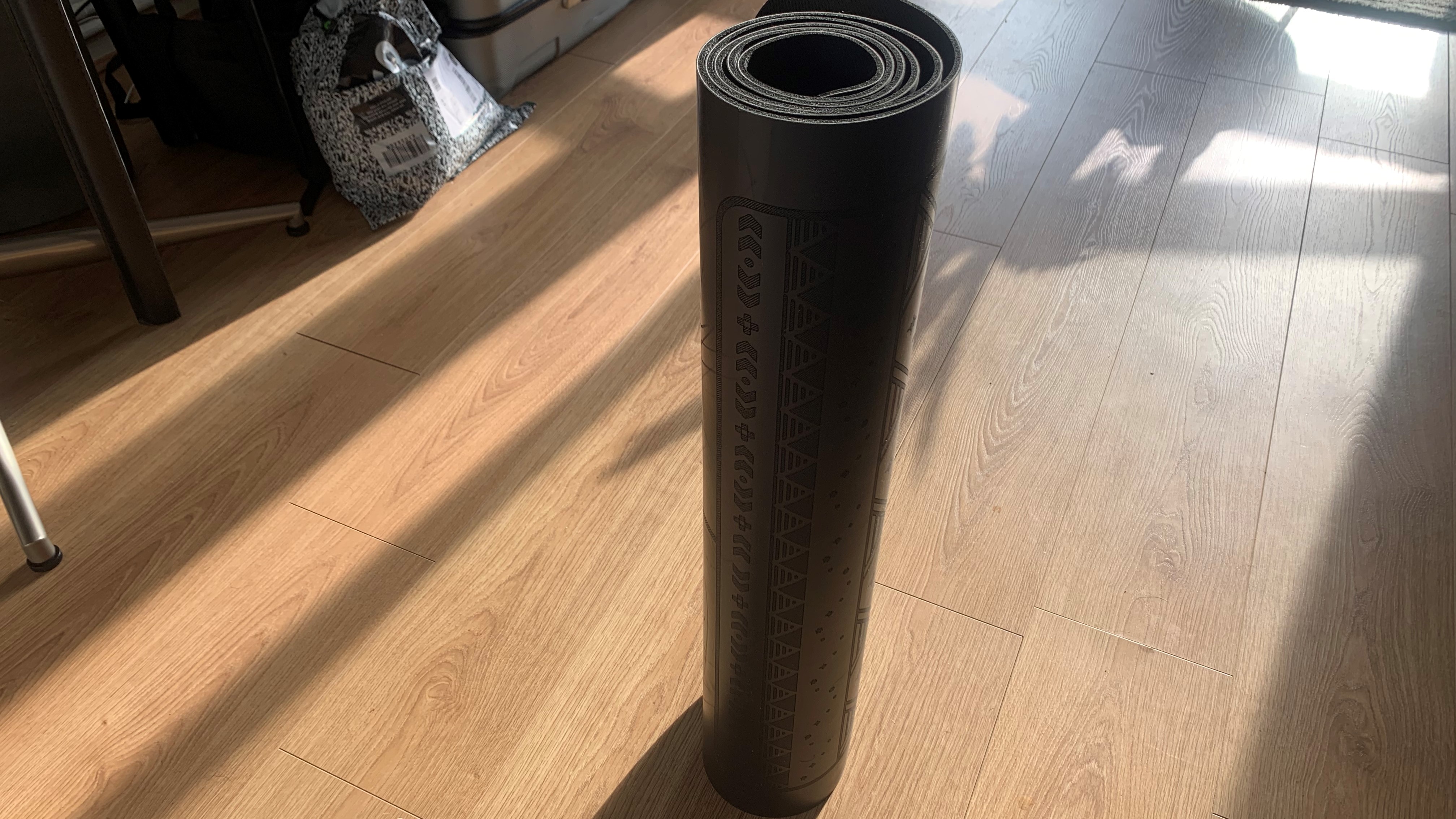
The Yogi Bare brand is about their ‘everybody, every body’ ethos and bringing excellent quality together with an eco-sensitive design.
As a fitness teacher and yoga student, we were keen to test this mat under various conditions to see if it could hold its own, and we were definitely impressed.
It’s not all about looks with this mat – although we love the stripped-back appeal– it’s also grippy, durable, and offers brilliant stability.
The Yogi Bare Wild Paws yoga mat is one of the more expensive brands we tested and sits just above the $100 mark. However, we highly doubt you’ll need to replace this mat for years.
4mm of springy thickness provides enough padding for classes like Yin but still allows you to feel grounded and well connected with the floor and mat. However, we recommend travel yogis look for other brands in our round-up because this mat weighs 2.5kg and feels heavy-duty under your arm. The good news is that the weight prevents the mat from sliding around or furling at the sides, so it depends on how you practice and what you value more.
If you’re after sustainable design, this mat also ticks the boxes. It’s made of natural rubber and PU (polyurethane synthetic leather), making it both non-slip and fully recyclable. We love that Yogi Bare encourage buyers to send in their old mats to be repurposed as part of their recycling campaign, bagging you a discount on a future purchase.
We noticed scuff marks and paw prints (yes, our dog also enjoys downward dog) after the first use, but the mat is easy to clean (warm water and diluted lemon juice at the ready), and we did test the black design – a notoriously tough color for hiding wear and tear.
If you’re looking for grip factor and a posture boost, this mat won’t fail you – even in humid hot yoga classes. The lack of slippage makes it perfect for dynamic classes and hot yoga, but it can hold its own during low-impact classes and even when you’re keen to get playful with arm balances or inversions.
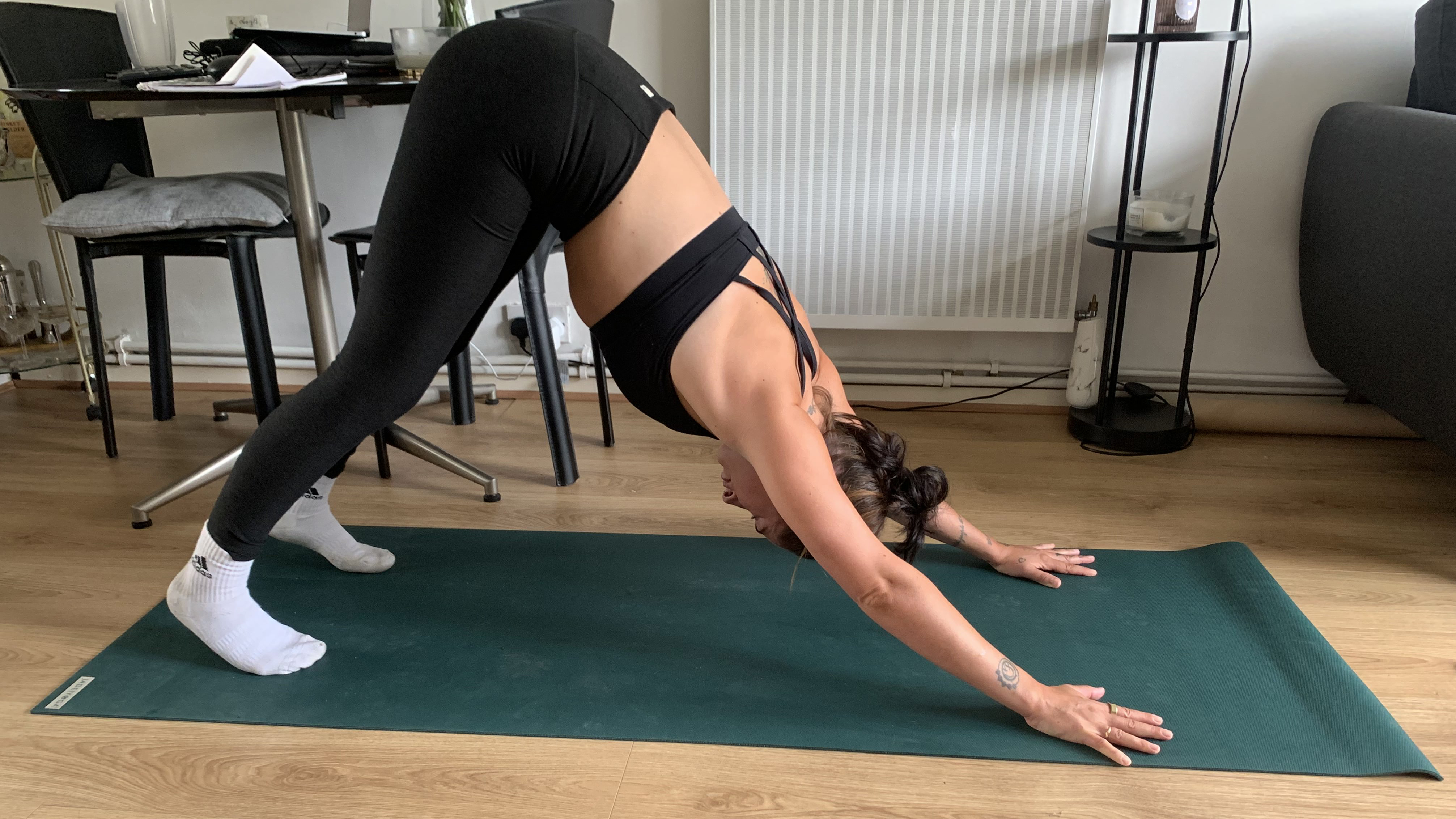
JadeYoga is fast becoming one of the most popular yoga brands in the world. The Jade Harmony yoga mat is the brand’s most popular design and costs less than $90, so we think it’s a steal.
Self-titled ‘nature’s best yoga mat’, the standout feature is the rough, grainy texture of the natural rubber which not only elevates grip to the next level but is also a nod to the brand’s all-natural design process. The natural rubber is tapped from rubber trees – a rapidly renewable resource – and contains zero nasties, but JadeYoga recommends avoiding this mat if you have a latex allergy as the mat could contain traces.
JadeYoga donates $5 to different charities depending on the color of the mat purchased. They also plant a tree each time someone makes a purchase. You have plenty of striking colors to choose from, yet the palette still feels minimalistic, earthy and in keeping with the brand itself.
There has been no compromise in quality when keeping to a sustainable ethos. The material isn’t like the soft PU coating of other mats, which might not be for everyone, but it’s well suited to anyone who gets creative with balances, tends to sweat more, or just prefers hot yoga classes. We found the texture harder to wipe down for this reason, and the mat is sensitive to sunlight and chemicals so water and a damp cloth will be your new best friend. It’s also reversible, which should help improve durability.
We recommend this mat for most ability levels and practices, but while it is 5mm thick (slightly thicker than the Yogi Bare Wild Paws yoga mat (opens in new tab)), it actually felt thinner and less suited to restorative classes. Those who favor a creative practice will love the design, but beginners or anyone nursing bad knees will benefit from trying another mat from this round-up.
The rougher rubber texture attracts dust and sweat staining, but this is typical of grippy mats and can be combated by simply cleaning it down after every class. We also recommend picking a more travel-friendly option from our lineup if you plan to take your mat away with you. All, in all, if you want to shop with a brand whose heart and soul are rooted in being Earth-conscious, this mat will serve you well, alongside a durable design.
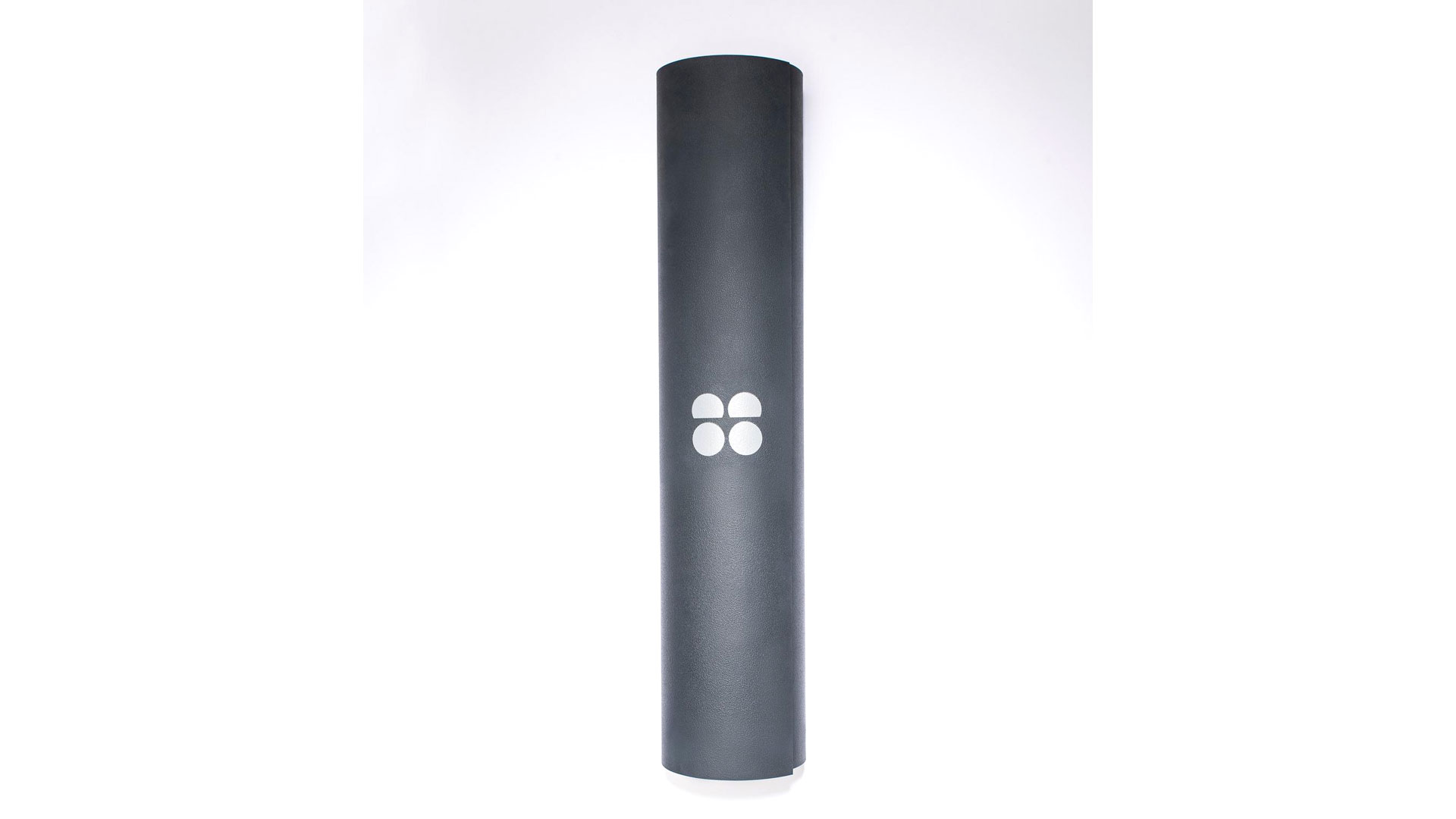
The Sweaty Betty Super Grip Yoga Mat lives up to its name on the grip front and provides excellent support and stability for all types of yoga.
Its sticky latex surface makes it durable enough to withstand a hot yoga session, and its non-slip nature makes it great for stability, meaning that you can stay in balance poses such as downward dog for longer.
Our one complaint is that due to its stickiness, this yoga mat is also somewhat of a dust and dirt magnet. It also picks up marks easily, but this is nothing that regular cleaning (and a carry bag for storage) can’t resolve.
Because this eco-friendly mat is made from natural latex (avoid if you have a latex allergy) you should expect a strong odor at first. However, this does wear off in time. We would note that this mat is a little thin for headstands, so you might need to add a towel to make it thicker.
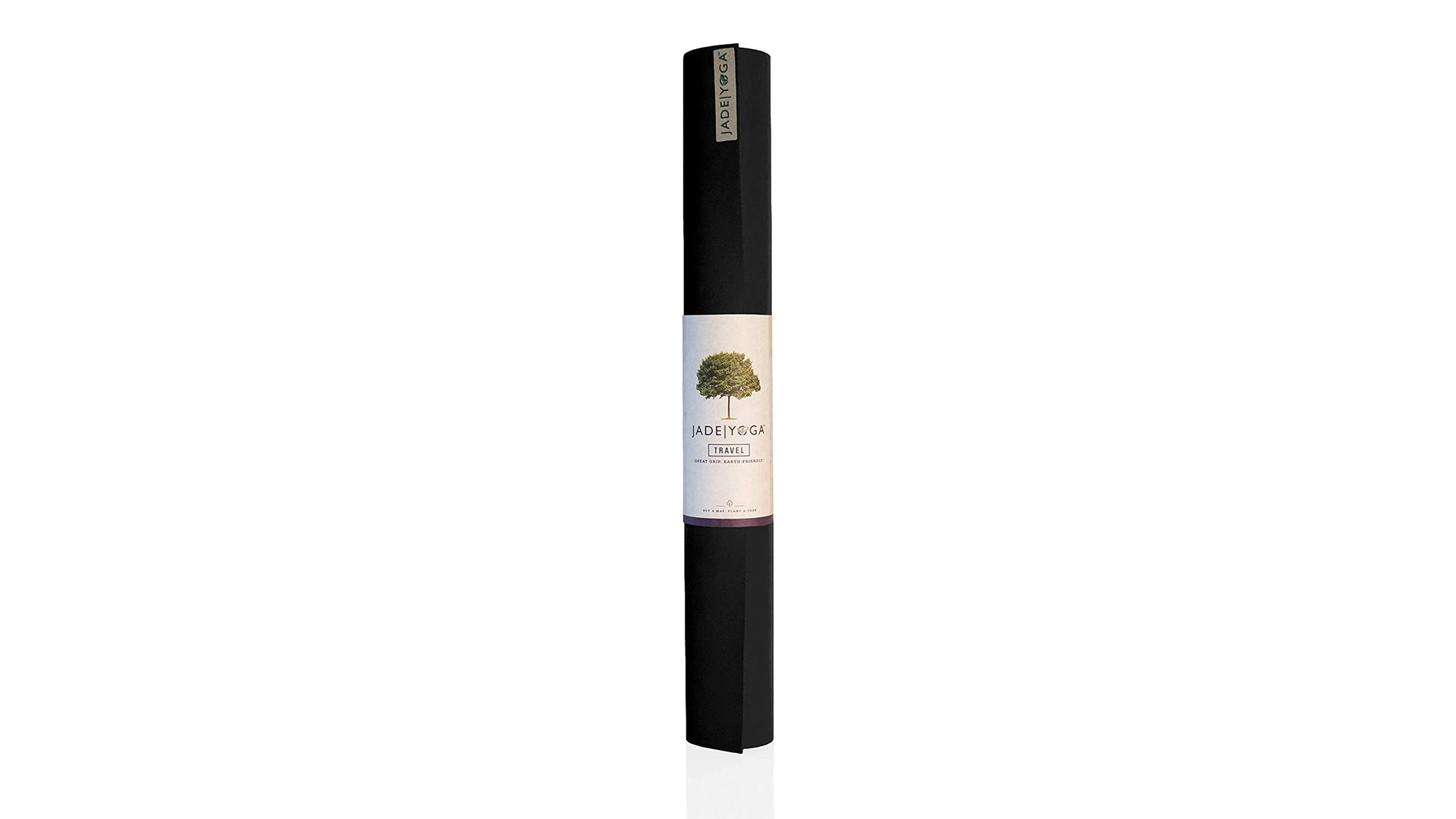
The Jade Yoga Travel Yoga Mat is perfect for travel as it’s thin, lightweight and compact.
It easily folds down to the size of a yoga block, and has a textured design that gives it great grip. While this mat will take up very little space in your luggage or your closet at home, the downside is that its super thin profile means that there is zero padding in this travel mat. We would also recommend rolling the mat out after you unpack it to minimize creases.
This yoga mat is made from PVC-free natural rubber so expect a rubbery smell for the first few weeks (and avoid this product if you have a latex allergy). It has an open cell construction and is really sticky, which is ideal as it means that you won’t slip and slide during your yoga session.
We would note that the mat can be a little slippery when sweat-soaked, but it doesn’t tend to mark or stain which is a big bonus. Jade Yoga has a plant-based mat wash you can use for cleaning, but we found that regular sprays worked just as well (although avoid UV cleaners as these can damage the rubber). Overall a great value mat with good performance for travelling yogis.
- This mat is still undergoing testing and we will update this guide when testing is complete.
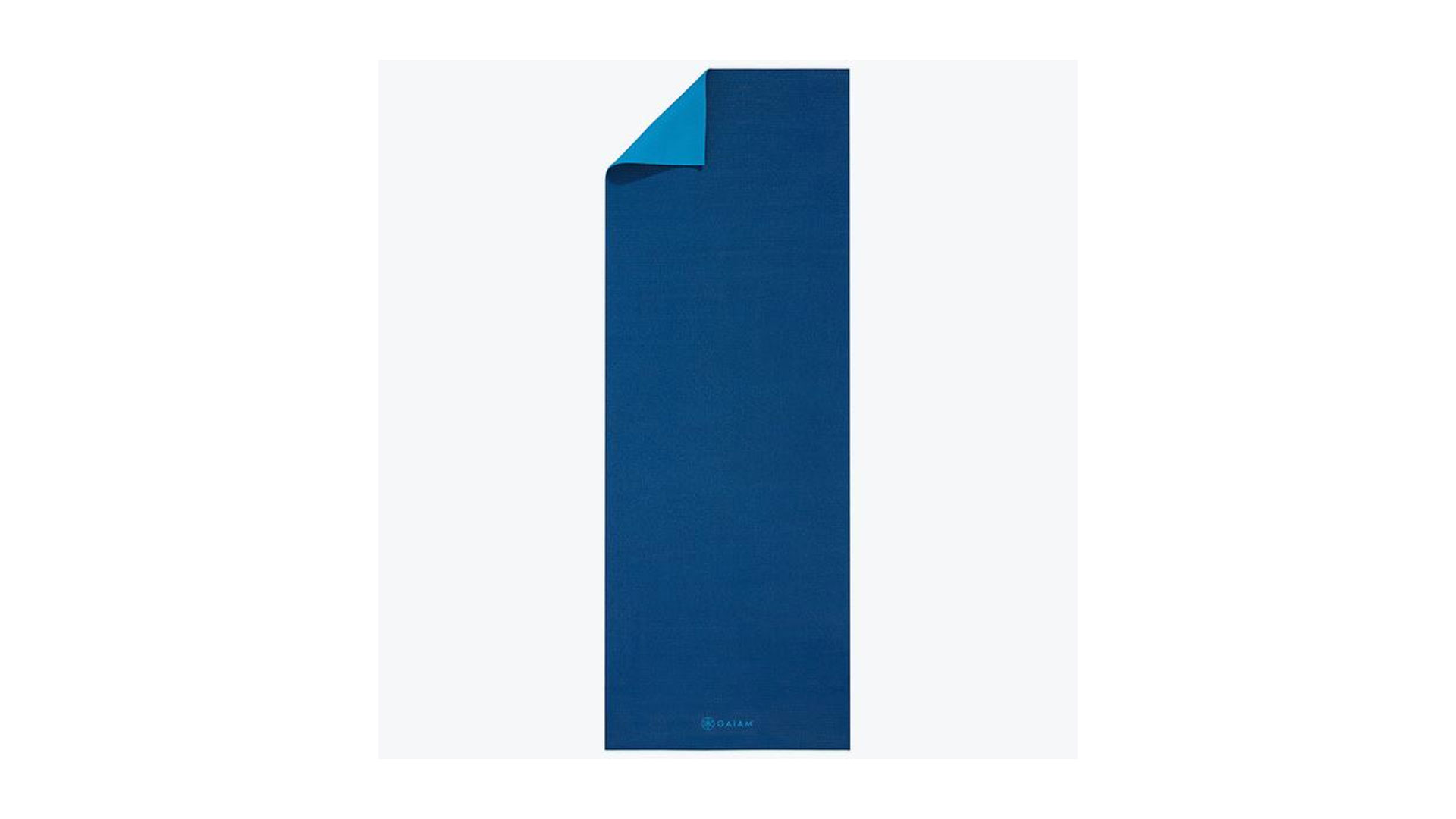
The Gaiam Premium 2-Color Yoga Mat is reversible, so you can choose which side suits your yoga style or activity.
It comes in at under 50 bucks so it’s a solid budget-friendly option for people new to yoga.
It’s a good size for taller people who need a bit more mat space, and has great cushioning to support joints and bones. That makes it a good choice for anyone using it for circuits or HIIT workouts, too.
Our main complaints are that it tends to mark easily and the stickiness doesn’t last very long. It’s sweat absorbent to an extent, but not compatible with hot yoga. The plus side is that it’s latex-free and comes with Gaiam’s lifetime guarantee.
- This mat is still undergoing testing and we will update this guide when testing is complete.
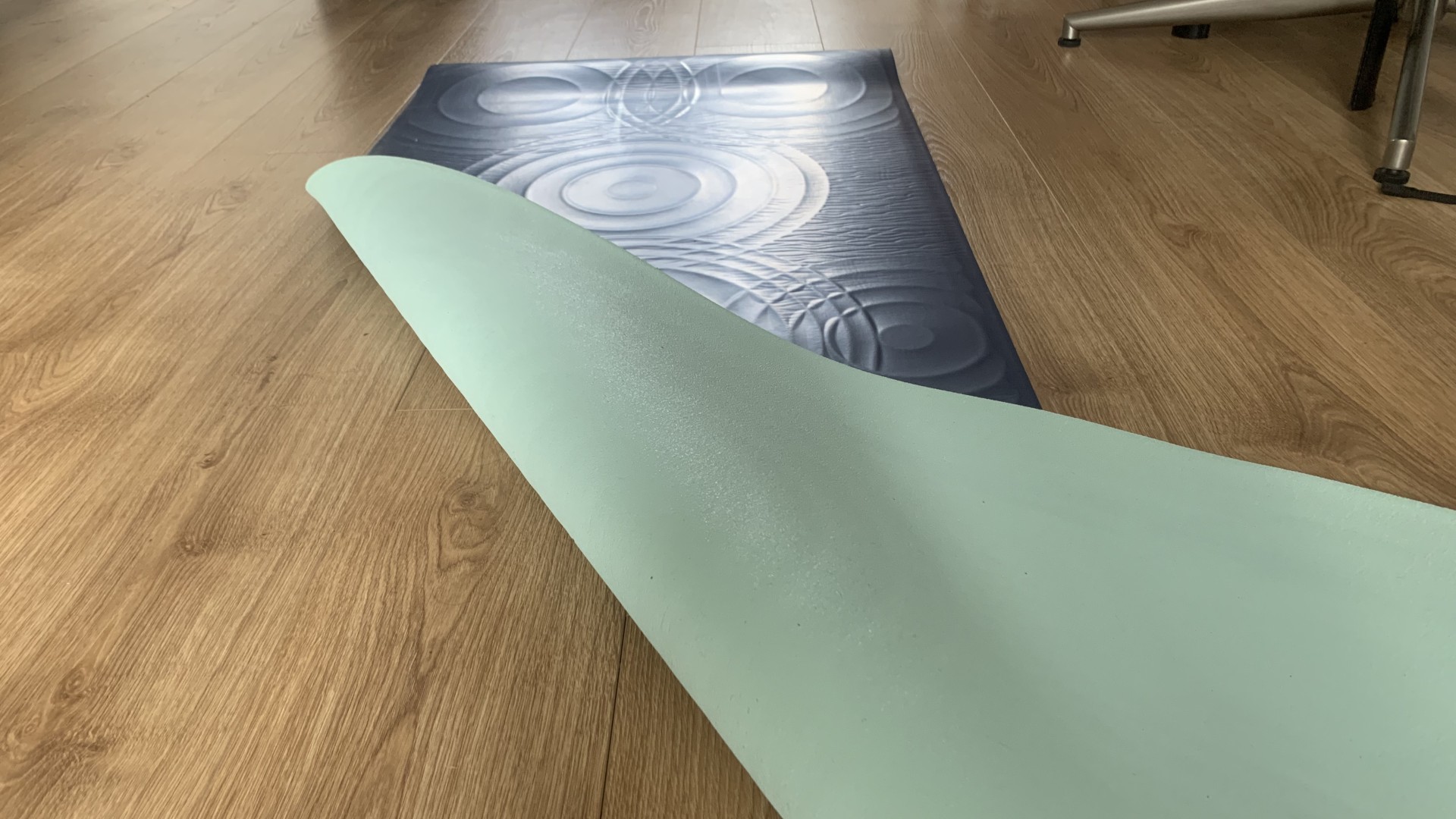
The Lululemon Take Form 5mm yoga mat is one of the most expensive on our list, retailing at over $100. But its beautiful design and cleverly subtle alignment cues allow every yogi to lead intuitively with their senses.
The goal of this mat is to create a more sensory and naturally flowing experience, using a 3D design to help improve your practice and better guide and position you. It comes in a range of soft marbled tones and features delicate concentric circles that look like raindrops spanning and rippling across your mat; each one is slightly ridged and helps guide your hand and foot positioning, as well as indicating the midline of the mat.
As always with Lululemon, materials are carefully considered. This model is crafted from natural rubber (certified by the Forest Stewardship Council) and is plushly padded and super grippy. We found it held its own in heated dynamic classes and more restorative Yin-based practices and cushioned enough that we could still hold firm on our balances.
Some users found the sticky grip prevented smooth transitions and others felt the ridges didn’t provide enough guidance, but we loved our time on this mat. Those seeking a lightweight design should consider others in our round-up, and the Take Form looked noticeably heftier than its Jade Harmony yoga mat (opens in new tab)counterpart.
Those trying to save some cash could benefit from the popular Lululemon Reversible 5mm yoga mat (opens in new tab), but we felt extremely at home on this model, and there’s plenty of space to have some fun.
- Read our full Lululemon Take Form yoga mat review
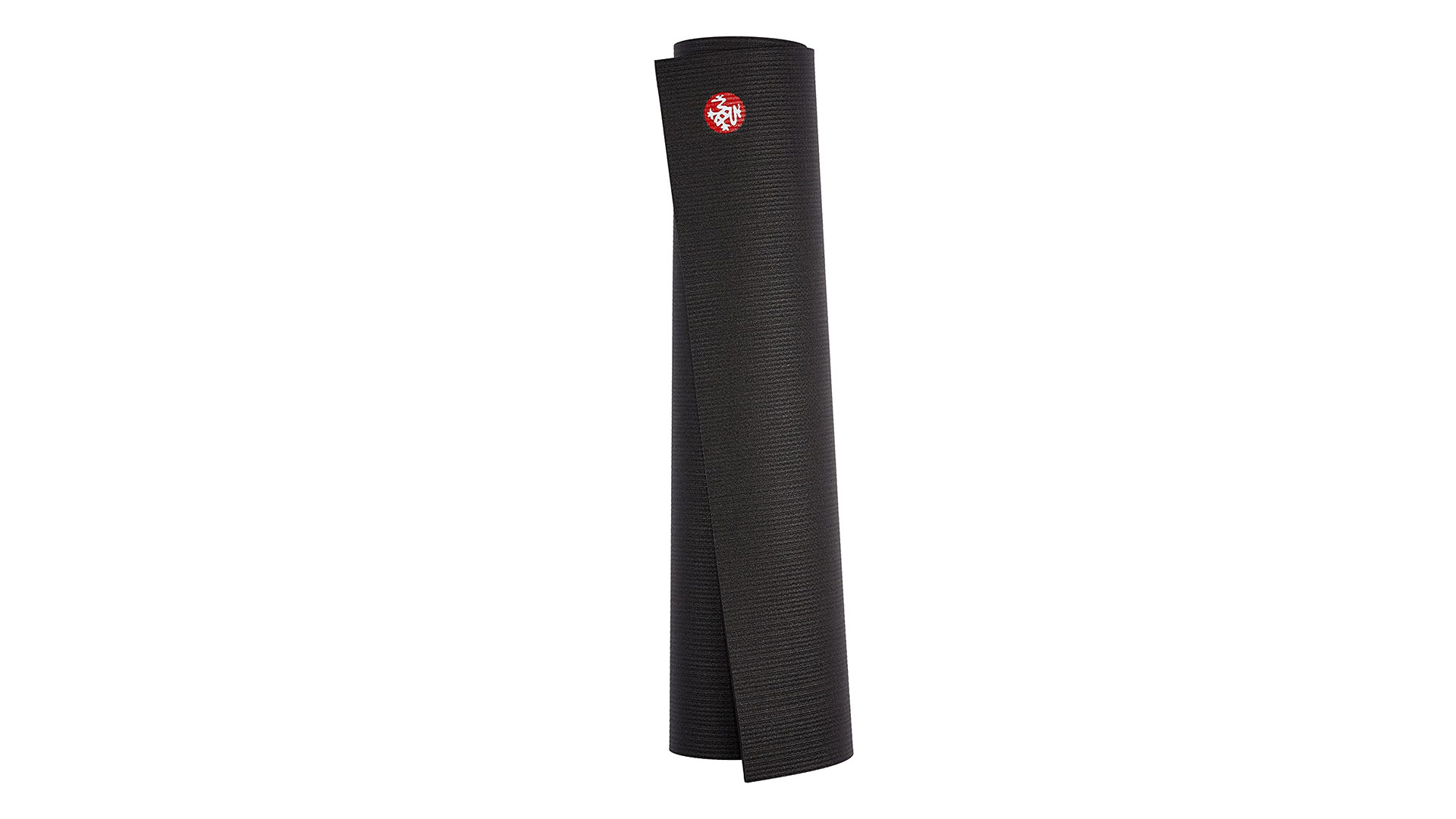
Skin-safe and OEKO-TEX certified (free from hazardous chemicals), the Manduka Prolite Yoga Mat is a favourite of yoga teachers and called pro for good reason.
Its ultra thick 6mm cushioning provides excellent support and stability, while it’s still firm enough underfoot for tree/balance poses. The dot pattern keeps the mat steady on any surface and the textured top layer means you can flow between moves without sticking to the mat.
Admittedly, this mat needs a bit of breaking in and it’s recommended to use a sea salt scrub to speed up the process. Each mat is handmade and is made from closed-cell material, which seals out moisture and bacteria, keeping mold and mildew at bay.
We love that it comes in two sizes – standard and extra long, so taller people can enjoy not hanging off the mat for once (but word to the wise: the bigger mat may take up valuable space in smaller yoga studios, which might prove unpopular!).
- This mat is still undergoing testing and we will update this guide when testing is complete.
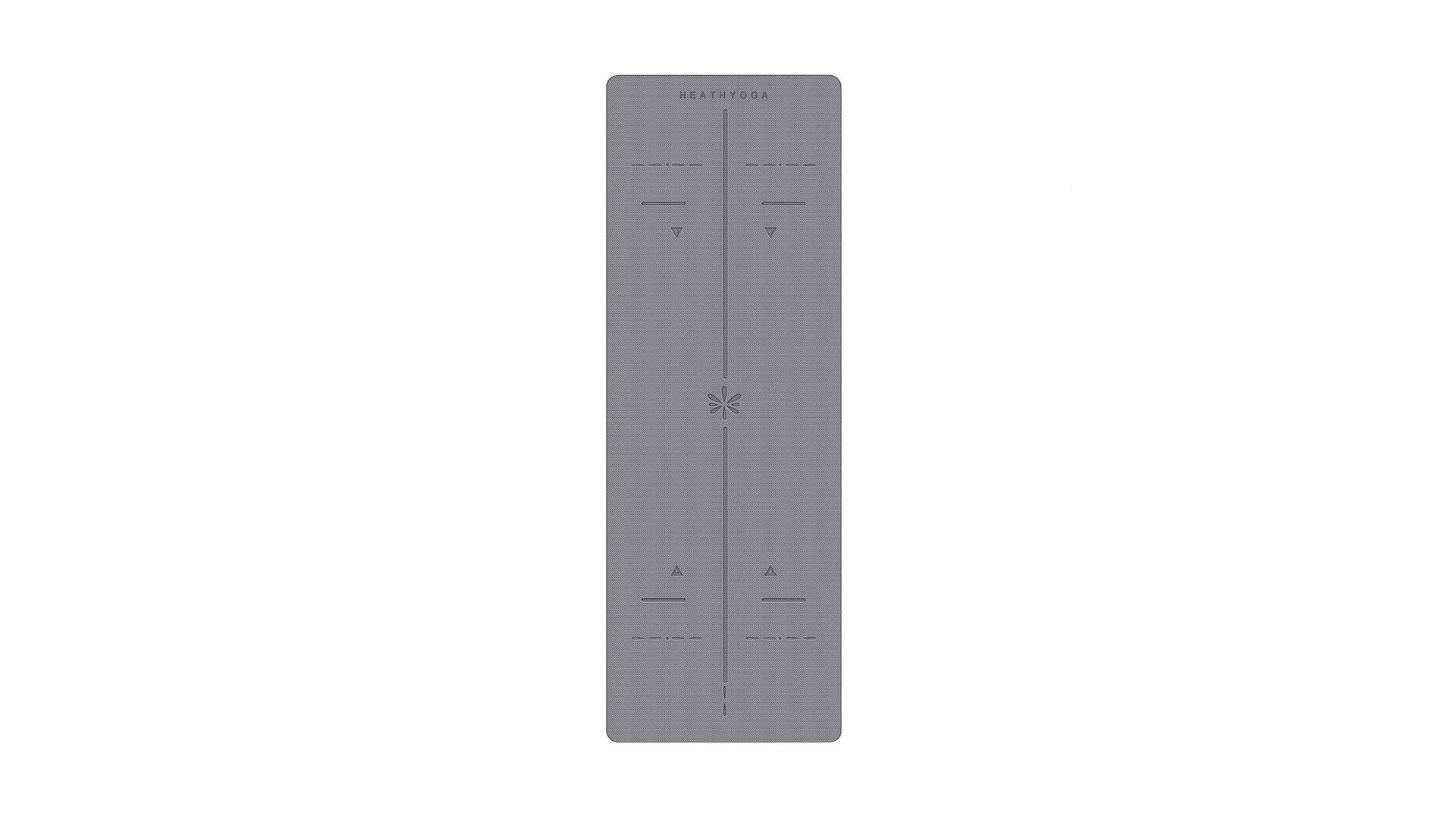
New to yoga? The Heathyoga TPE Body Alignment System Yoga Mat is a solid choice because it comes with marks for hands and feet placement.
This is really helpful for newcomers to yoga, as you can work on correct technique and positioning with less risk of injury.
It’s slip resistant, easy to clean and stays nice and flat once it’s unrolled. It’s thick enough to do prolonged yin practice poses with comfort and has excellent grip, even in hot yoga classes. We love how durable it is, with just the right amount of cushioning for standing poses.
Longer and wider than standard yoga mats, the Heathyoga TPE Body Alignment System Yoga Mat comes with a free Velcro strap and carrying strap
- This mat is still undergoing testing and we will update this guide when testing is complete.
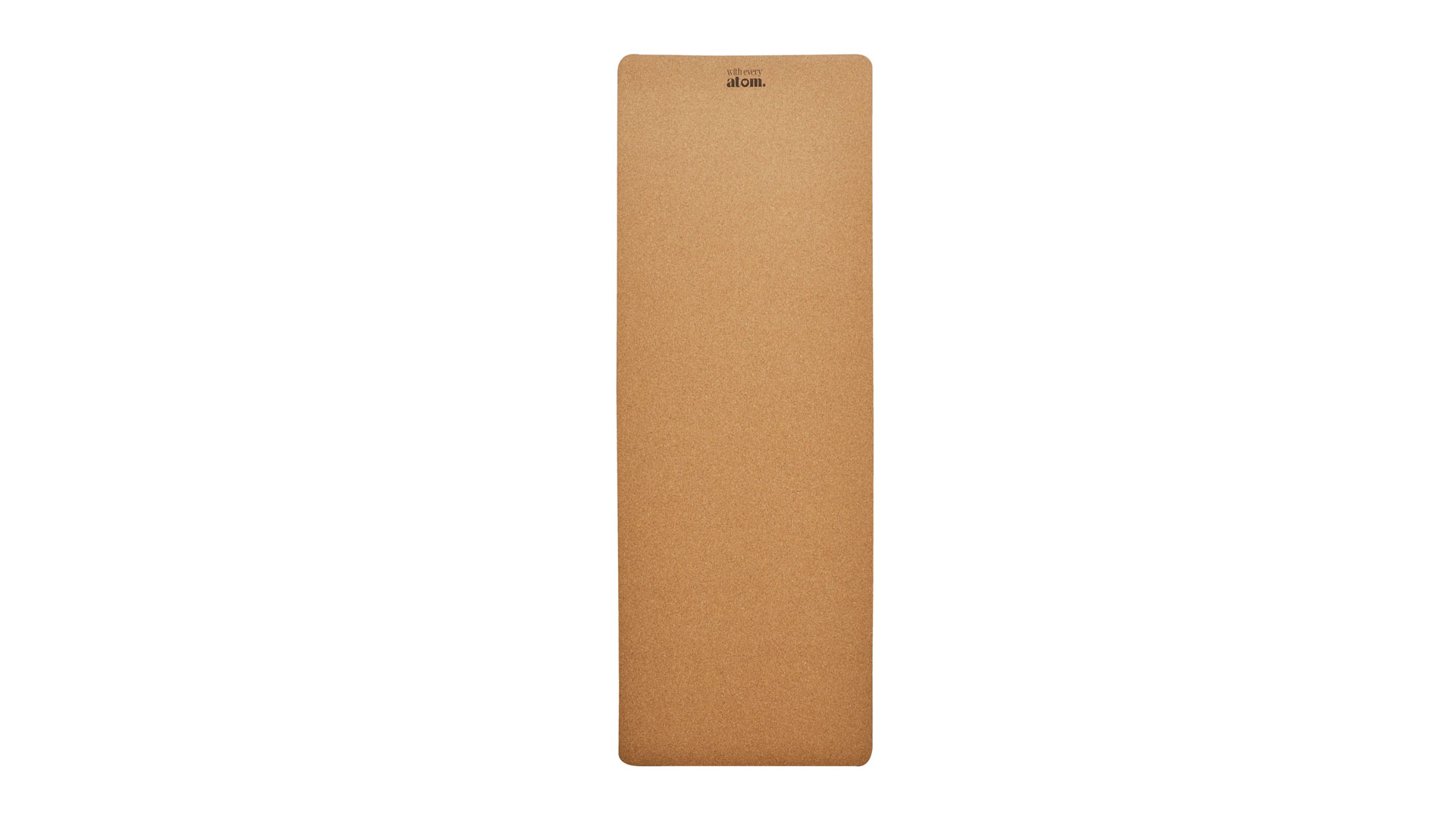
The With Every Atom Cork Yoga Mat is extra large so it’s a great option for taller people.
It’s made from naturally grippy rubber and moisture wicking cork, so the grip actually improves the more you sweat. It’s a great choice for all styles of yoga, including Ashtanga, Hatha, hot yoga and other floor-based workouts.
It’s fairly lightweight and not too thick yet supportive and comfortable enough for daily practice. We love that the With Every Atom Cork Yoga Mat is vegan-friendly and made from sustainably sourced, natural and recycled materials.
Cork is naturally antimicrobial and hypoallergenic, so it’s also low maintenance. It tends to mark easily, but is easy to clean. Plus, when you buy an Every Atom Cork Yoga Mat the brand plants a tree. The only downside is that this yoga mat only comes in one color.
- This mat is still undergoing testing and we will update this guide when testing is complete.
Which yoga mat is best?
Choosing your ideal mat will depend on a few things, so we spoke to yoga teacher Eloise Skinner (opens in new tab) to find out more. We also cover some basics below that you should factor into your decision-making.

Eloise Skinner is a qualified yoga, Pilates and mindfulness teacher. She currently holds classes at various studios across London. She’s also an author and the founder of two educational start-ups.
Yoga style
“Overall, when it comes to looking for mats, think about the types of mats you’ve liked to practice on in studios in the past,” says Skinner. “If you have a favorite studio mat, check the brand name (many studios use big-name brands like Lululemon).
You can also consider the type of practice you normally take. If you have a slower, Yin-based practice, go for a thicker, more supportive mat. For fast-paced Vinyasa, look for something a little lighter, with a good grip.”
During heated vinyasa or Bikram, you’re likely to get sweaty. We recommend prioritizing grip, including rougher textured mats that will keep you stable during long holds and transitions – like the Jade Harmony yoga mat (opens in new tab)or most Lululemon mats.
It’s also important to consider materials with sweat-wicking properties and an antimicrobial layer which will prevent bacteria from building up, keeping your mat in action for longer (without any unpleasant smells).
Lifestyle
If life has you traveling here, there, and everywhere then you’ll want a lightweight mat that’s easy to stow in a suitcase or throw under your arm. Anything under 2kg is ideal, but it depends on what you personally consider ‘heavy-duty.’
Skinner recommends mats with a carrying strap and protective case and something light enough to throw over your shoulders. “You can always double up your personal mat on top of a studio mat if a travel mat feels too thin,” she says.
JadeYoga Travel yoga mats (opens in new tab)and the Gaiam brands are hugely popular. We also rate the Primasole folding yoga mat because it folds like paper into a compact and easy-to-carry parcel.
Just because a yoga mat is thick doesn’t necessarily indicate that it’s heavy. Thickly padded foam mats are harder to roll up and tend to curl as they roll out, but they can still be lightweight and are perfect for low-impact classes, beginners, and those on the move. In this instance, you’d need to check the material and weight to see just how lightweight it is.
Material
If you’re trying to be more sustainable with your choices, or suffer from allergies, check the materials in the specifications before you buy your mat. Cork and PU are brilliant options, and natural rubber is hugely popular as it’s a biodegradable and rapidly renewable resource, although it may contain latex.
Many brands now combine synthetic with natural materials that are all recyclable. Brands like JadeYoga and Yogi Bare have even partnered up to plant trees or recycle mats on your behalf when you buy with the brand.
Different materials will determine durability, grip, and thickness. Natural rubbers tend to result in a course mat that is great for grip, but PVC-based yoga mats are arguably more durable.
Best yoga mats for hot yoga
“For hot yoga classes, my main recommendation would be to look for a mat with specialist moisture-wicking materials (in other words, a mat designed for a hot studio),” Skinner advises.
“You’re looking for traction under your palms, but not too thick that you can’t feel the floor. It’s important in yoga that the mat is not too cushioned or thick. The closer your hands and feet are to the floor, the more you’ll be able to grip, balance, and feel a sense of being grounded.”
Foam mats get slippery quickly, whereas rubber or PU-coated mats hold out in hotter conditions. However, rapid yoga classes like Rocket require faster transitions, and grip could slow you down, so remember to consider your class preferences too. If you’re using yoga to fix your posture (opens in new tab), grip is good.
Cork mats, like the With Every Atom Cork yoga mat, absorb moisture well and are perfect for hot yoga classes. Lastly, look out for mat specs that mention open cell or closed cell structure; open cell refers to an ability to absorb moisture, whereas closed cell has sweat-wicking properties and will prevent sweat from absorbing into the mat.
Regardless of the route you go down, ensure you’re not overspending for the sake of the brand name. Many affordable mats under $100 are still excellent and can do the job equally well, whereas some luxury brands could have you paying an extra zero just for a gimmick.
What is the best thickness for yoga mats?
Yoga mats vary in thickness from roughly 1.5mm to 6mm. Most people aim for the middle mark to benefit from various yoga styles.
Traditionally, yoga teachers and advanced yogis opt for a thinner mat because it gives them a more stable connection to the ground. This generally helps to improve balance as well. However, people with joint-related injuries will benefit from padding, as will anyone who regularly enjoys stretching to improve flexibility (opens in new tab) or enjoys HIIT, restorative yoga, or Pilates.
If you prefer a thick mat, we love the Lululemon Take Form yoga mat. We recommend Primasole for a thinner feel.
Where is the best place to buy a yoga mat?
Determining which brand is best for yoga mats can be quite a task. We love JadeYoga and Lululemon, but Sweaty Betty also pulls in rave reviews regularly. If you’re still unsure, check the reviews on an independent website like Amazon.
Third-party websites like Best Buy and Target often pack discounts on yoga mats and fitness apparel, but if a good deal looks too good to be true, do your due diligence to avoid false economy. Low-quality materials that are un-recyclable will only have you spending again in a few months and could also have you slipping over during class.
“As a teacher, my favorite is the Sweaty Betty Super Grip yoga mat (opens in new tab),” Skinner recommends. “It’s soft enough to feel comfortable but designed to prevent slips. Also made with fully biodegradable materials!”
How to clean your yoga mat
Our guide on how to clean a yoga mat (opens in new tab)is worth checking out, but many brands will provide instructions on their website. This will vary depending on the material of your yoga mat.
Some will recommend using warm water and a damp cloth, whereas others may prefer diluted lemon juice in place of warm water. It’s also worth checking if your mat is sensitive to UV light as this might prevent outdoor practice or drying outside.
Most brands recommend avoiding harsh chemicals, washing machines, or dryers if you want your mat to last.
Most importantly, your yoga journey should be fun. Whichever mat you choose, make sure it works for your lifestyle and needs first.
How we test yoga mats
To ensure we only recommend the best yoga mats, we put each one through its paces in two types of yoga classes – gliding gracefully through a 60-minute restorative yin and powering through a sweaty 60-minute hot vinyasa.
We tested each mat for comfort, grip, versatility, and value for money as we lunged, flowed, and navigated inversions, also noting standout features like sustainable materials or design perks like alignment cue lines and fun patterns. Each model was awarded a final score out of five stars, determining how likely we are to recommend the product to yogis seeking a new mat for finding their zen.
*This article is for informational purposes only, and is not meant to offer medical advice.
Stay connected with us on social media platform for instant update click here to join our Twitter, & Facebook
We are now on Telegram. Click here to join our channel (@TechiUpdate) and stay updated with the latest Technology headlines.
For all the latest For Top Stories News Click Here
